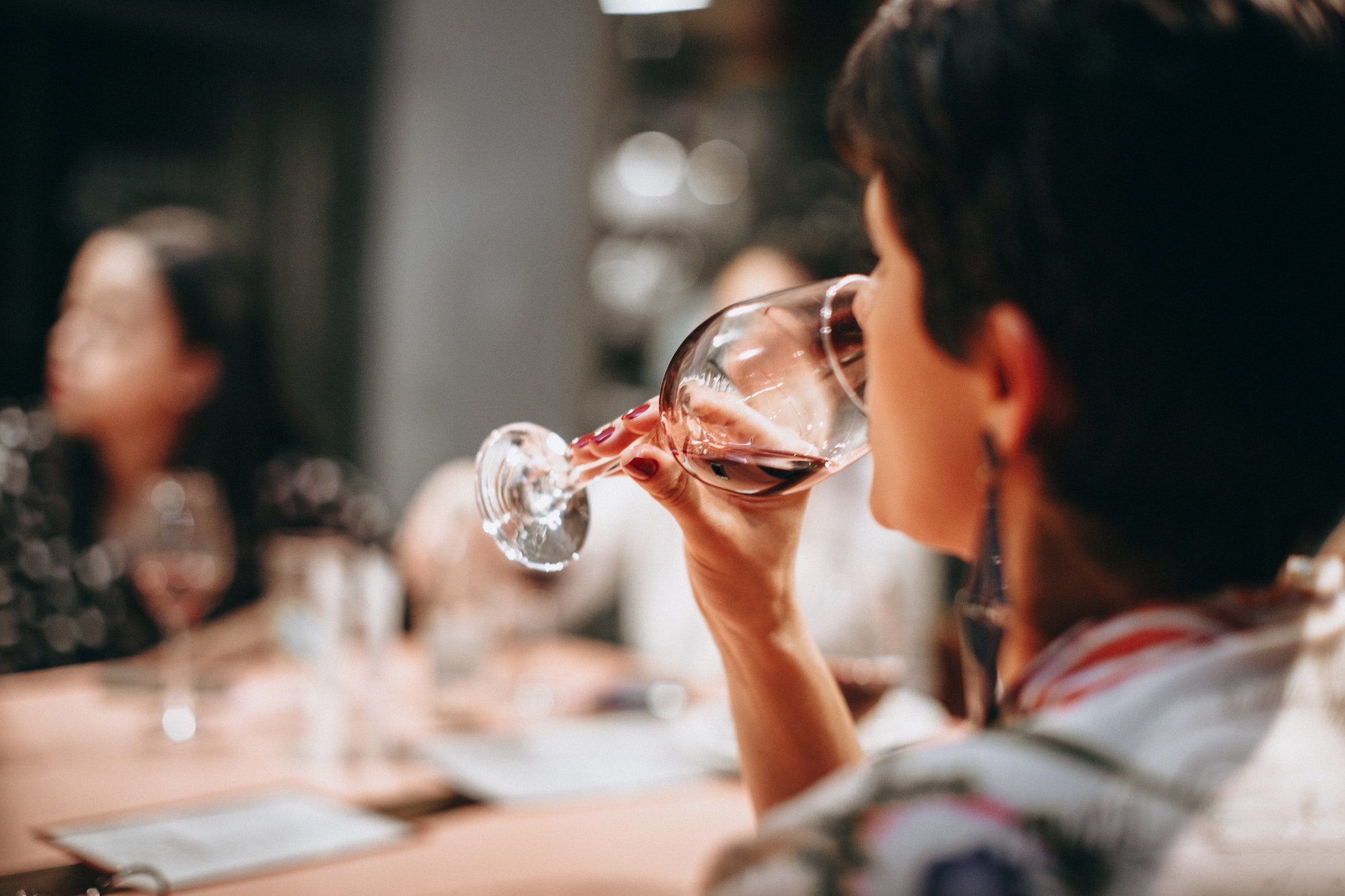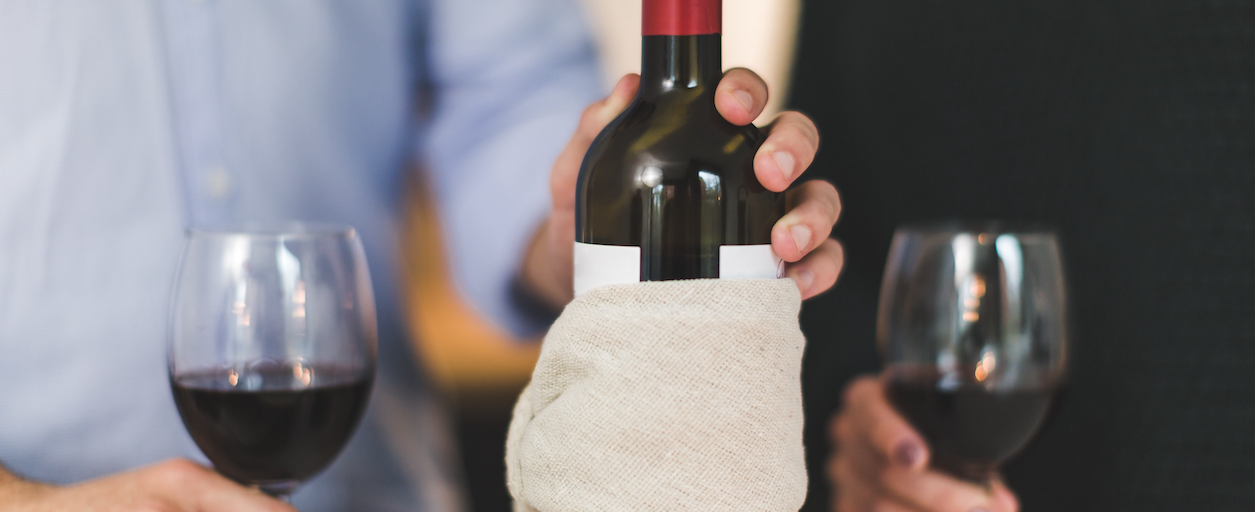The Art of Tasting Wine at a Restaurant
So you’re on a big date. Or an important meeting. Or out with some good friends. You’re at a nice restaurant. The kind of restaurant that irons the table cloths before each service. Maybe there’s a star or two involved. You’ve read the menu, shared your choices with your fellow diner(s) and even progressed past the often heated “red or white” debate.
This is arguably the most mysterious, unknown and contested point during a fine dining experience
As a result of being an avid reader of Aspiring Snob, you’ve also taken it upon yourself, or been assigned, to decide on the wine to accompany your fine meal. You’ve browsed through and weighed up the merits of New World versus Old World, the type of grape, perhaps the year and – cutting right to the chase – the price. Finally you settle on what you believe will be an impressive accompaniment to your meal and will increase your standing by pairing perfectly.
At this point you’ve done well, but what comes next is an often mysterious and unexplained phenomenon that when diners are honest, usually have no idea what it’s really about – tasting the wine. This is arguably the most mysterious, unknown and contested point during a fine dining experience. Why are you doing this? What are you expected to do (or not do)? What happens if you make a mistake? Let us then help guide you through this process and to know what is and is not expected of you.
First off, there is no “standard” way of doing this. There is no clear definition of right and wrong in this process. All there is is a way to get through it unscathed, without annoying anyone, and with the wine you ordered. Let’s go through this step by step.
The Order
When the waiter or waitress (or sommelier) asks you about the wine, you have every right to ask them questions. Will it go with your meal choice? Is there a better option? You are not expected to be the wine expert here – they are. If you are familiar with your preferences, but are not sure between two bottles, say so. A good sommelier might let you try both to determine, or at least describe them well enough that you can make a decision.
Otherwise order with confidence but take note of these three things:
- The vineyard (the one who made the wine)
- The grape (things like pinot noir, riesling, cabernet sauvignon)
- The vintage (the year the grapes were harvested)
We’ll get to why in the next section.
The Presentation
At this point, the waiter/waitress/sommelier will come back with the bottle and present it to you. Now it’s on you to verify that they have the correct one. Verify the vineyard, the grape and the vintage. If you spot something different, now is your time to say so, not half-way through the bottle.
It is entirely possible that the wrong wine has been fetched – Merlot and Malbec labels can look awfully similar and mistakes happen. It’s also possible the restaurant has run out of a particular vintage and is trying to palm off a cheaper one. For example a bottle of 2015 Clos des Lambrays Grand Cru Pinot Noir can go for around $400. Whereas the 2013 vintage is around $160. Easy to miss if you’re not looking out for it.

The Pour
Assuming the ordered bottle has indeed made it to your table, as the person who ordered the wine, it’s now your job to taste it. This is first done by the server pouring a small portion into your glass fresh from the bottle. This is all you have to taste with.
To get the most out of the tasting portion, you should give your glass a bit of a swirl to release any aromas and allow the wine to absorb oxygen in the air with a greater surface area. This will help with the later tasting stage.
First – some history. While it’s not exactly clear how this tradition started, it does appear that it was based around a host proving to their guests that the common wine was not poisoned and was safe to drink for all. Hence why all the guests glasses are filled after you’ve tasted, and yours is filled last. One hopes you’re not tasting for poison, so let’s talk about what you are tasting for.
The Taste

Straight into it – you are tasting the wine to ensure it is not damaged. Simple as that. This could be due to a number of reasons such as being corked (the cork was damaged and thus let impurities or mould into the bottle during storage), or there was a defect during production and perhaps there’s unexpected sediment or the colour seems wrong. Usually the smell will be foul and the taste will be off. Note that the more you taste and smell, the quicker your senses will adapt. So go with your first instincts here if it does seem bad.
If any of these things happen, you must inform your server immediately. They can then smell and taste the wine themselves and verify your conclusion, at which point they should replace the bottle, or at least offer an alternative for you.
Note that if a wine generally smells ok but tastes a bit acidic or tangy (especially if it’s a red), then it may simply need to be aerated either through time or a decanter. If you feel this is the case, then you can request a decanter, or at least an opinion, from your server.
Corked, or at least tainted wines, have had occurrences recorded as high as 7% of all bottles sampled. However as techniques and technology improve, the percentage of tainted wines in recent years has reduced dramatically.
One myth in tasting is that you’re tasting to see if you like the wine. This is blatantly not true. If a $200 bottle has just been opened for you, your whims on whether you like it or not will not go down well with the restaurant. The details on whether it’s the right wine or not should have been handled before the bottle was even brought to you. The one notable exception here is if the sommelier has suggested that you try some options first.
Another point is that a bottle that has a screw-top lid as opposed to the cork, generally doesn’t need tasting. This is of course a sweeping generalisation and it’s entirely possible a screw-top bottle has some production faults. However given most issue occur with bottles with corks, you can generally save everyone some time and just ask for the bottle to be poured in directly without tasting.
The Summary
In short, don’t be afraid to ask the staff for assistance. It is ok not to be an expert on this stuff. Your fellow diner(s) would rather have a great bottle of wine selected with professional help, instead of something you’ve chosen at random that is completely inappropriate. The right wine can enhance and elevate a meal.
As with all things, practice makes perfect. The more you do this, and the more you observe others doing it, the more comfortable you will be. However knowing the reasons behind it, the purpose of the ritual and your part in it, should at least give you the confidence to make a wine selection that will boost your meal and your evening.
